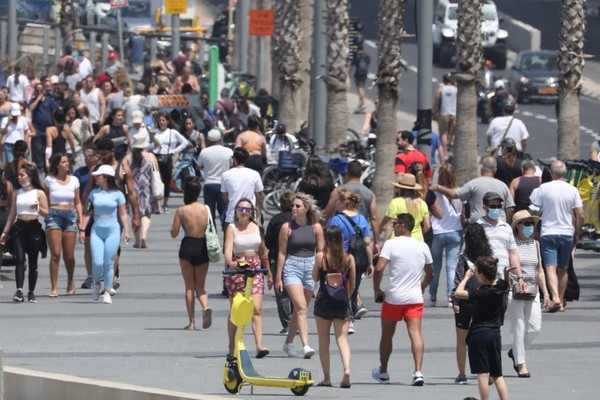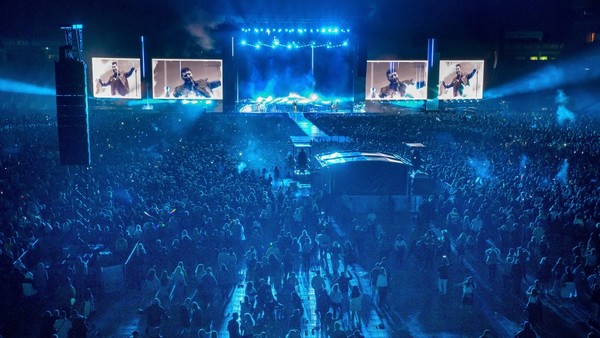
Have you ever imagined going outside without a mask in the era of the COVID-19 pandemic? The story that seemed to be only in our imagination is becoming a reality. In April, Israel, which recorded a high COVID-19 vaccination rate, announced that it would ease lockdowns as they reached herd immunity. New Zealand does not have a high vaccination rate like Israel, but many people in the country have taken off their masks after the country’s strict containment policy. Let's take a closer look at how the two countries were able to take off their masks, unlike India and other countries suffering from the COVID-19 pandemic, with a record number of confirmed cases every day.
Israel's Anticipation of Herd Immunity
Israel started vaccinating its citizens with the Pfizer-BioNtech vaccine on December 19th, 2020, after securing a number of vaccines on the condition of providing vaccination data to Pfizer and is already heading towards herd immunity. By April 17th, about 59 % of the people in Israel had been vaccinated once, and 54.9 % of the people had been fully vaccinated. According to the BioTimes, the antibody formation rate is estimated to be higher than that of the UK considering all Israelis who have been fully vaccinated form antibodies and even those who already have antibodies from COVID-19. According to the Times of Israel, on March 16th, the World Health Organization (WHO) found that 40% of the total population had antibodies after surveying 6,000 blood samples of Palestinians. According to Our World in Data, as of April 24th, the rate of at least one vaccination per capita in Israel was 119.99%, Chile at 73.81%, the U.S. at 67.47%, and the at U.K. 67.14%. Israel's basic reproduction number[1], which has been more than 1.0 since February 21st, fell to 0.78 as of March 14th, with the COVID-19 infection rate plummeting for the first time since the pandemic began, and most of the economic activities being resumed.

Israeli Minister Juli Edelstein officially declared that people do not have to wear masks outdoors from April 18th at a ceremony marking the 73rd anniversary of independence. Therefore, citizens without masks could be seen throughout Israel. According to the Associated Press on April 25th, Israel came up with additional measures to ease COVID-19 prevention restrictions, including allowing non-vaccinated people to enter health clubs and swimming pools. It was also decided to increase the allowed number of groups of people outdoors from 100 to 500 and indoors from 20 to 50. Measures to limit the number of passengers on public transportation to 75 % of the quota shall also be abolished. Israel will implement measures to ease COVID-19 prevention restrictions by allowing children and teenagers under the age of 16 who cannot vaccinate to use public facilities from May 6th, with approval from the Ministry of Health at a ministerial meeting on April 27th.
How Could New Zealand People Get Around Without a Mask?

New Zealand also had more than 50,000 people gathering to sing along without mask-wearing and social-distancing at the concert of the band Six60 on April 24th. This proved New Zealand's successful infectious disease prevention and control. On April 25th, Bloomberg reported, "the concert was a demonstration of New Zealand’s success in controlling the coronavirus through closing its international border and rigorous testing and contact tracing." New Zealand has had about 2,600 total confirmed cases of COVID-19 and 26 cumulative deaths as of April 30th out of a population of 4.82 million, even though New Zealand's one-time COVID-19 vaccination rate was only 2.9%, almost at the lowest level in the OECD. However, there have been no deaths since February this year, and the number of new daily confirmed cases has been less than 10 cases each day since April 10th, with no local infections. According to the BioTimes, experts saw the cause of New Zealand's success in infectious disease prevention and control as a result of strong containment measures, including the rapid closure of its borders early in the COVID-19 crisis. New Zealand banned all foreigners from entering the country on March 19th, 2020, when there were 28 confirmed cases of COVID-19. It also banned schools, shops, and public institutions from opening for five weeks except for essential facilities. And when situations got better, New Zealand eased the blockade, but when the number of infected people increased, the country strictly contained again, and was made safe from COVID-19. New Zealand started a quarantine-free Travel Bubble system with Australia on April 19th. The Travel Bubble system refers to an agreement that allows two or more countries to travel back and forth by forming a safe border between areas with excellent quarantine protection in the COVID-19 crisis. If the agreement is signed, restrictions on visitors from overseas will be eased, such as exempting the two weeks of self-isolation for arrivals from overseas. According to the BBC, this is expected to revitalize New Zealand's tourism industry as Australian tourists have recently returned to New Zealand.
Israel has a high COVID-19 vaccination rate, and New Zealand has begun to take off its masks despite the global COVID-19 pandemic due to its thorough containment policy. Israel, in particular, is expecting herd immunity based on the world's fastest vaccination rate, and New Zealand has implemented a strict containment policy against COVID-19, preventing the early spread of confirmed cases. Still, only Israel and New Zealand have shown rapid recovery. However, the CAH hopes that the COVID-19 pandemic will come to an end and that it will be able to live without masks not only in Israel and New Zealand but also over the rest of the world.
[1] It is a figure indicating how many people a patient infects, and the number greater than 1 indicates a spread rate, and the number less than 1 indicates a decline.

